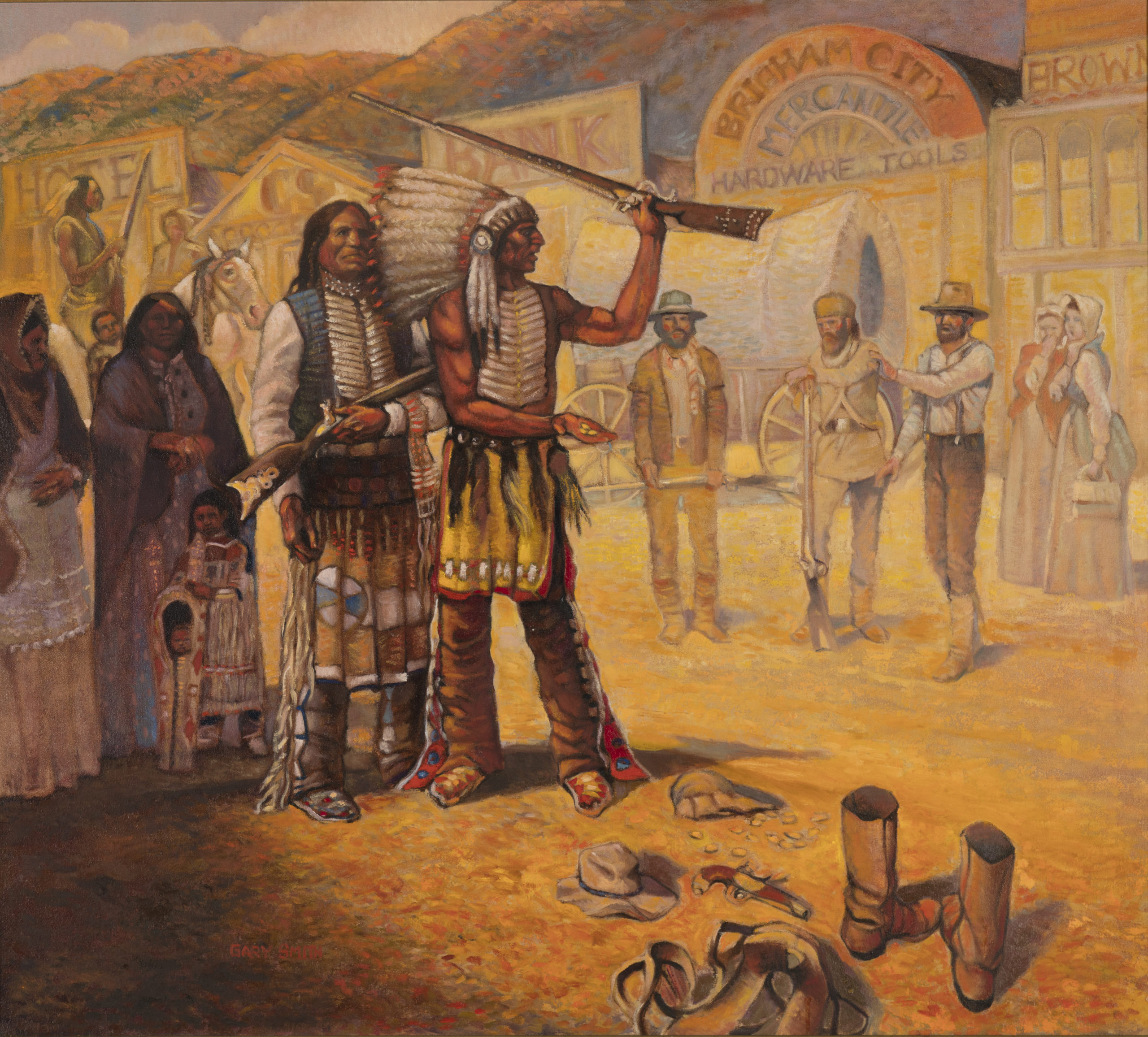1976 Exhibit Brochure
In 1862, Chief Pocatello arrogantly appeared in Brigham City with 60 warriors and demanded that the settlers trade with him. His trade goods, the dresses of his squaws and the scalps hanging from his belt had been taken from California and Oregon immigrants.
2023 Exhibit Guide
Pocatello or Paughatella was born in 1815 in the Grouse Creek region. He was a Shoshone leader when the Mormons arrived in the late 1840s. As colonization intensified, Pocatello led raids along immigrant trails. War broke out in 1862 when Shoshone struck every stage station in a wide area. Pursued by the military, weary and discouraged, Pocatello and eight other Shoshone leaders signed a treaty on July 30, 1863, but the Shoshone continued to suffer and find relief in raiding stage stations.
Pocatello was arrested, but a pardon issued by President Abraham Lincoln prevented his execution. Pocatello and his band moved to the Fort Hall Reservation, then joined a Mormon missionary farm before being forced to return to the reservation, where he stayed until his death in 1884.
Kaysville Area Connection
Jesse W. Fox, surveyor, was sent by Brigham Young to lay out a town site and draw up plans for a protective fort, because in 1854, there had been some tensions between settlers and the native bands of central Utah. However, pioneers in Kay’s Ward abandoned the effort because they had never been threatened by Native Americans.
Artist
Gary E. Smith (1942-living)
Gary Ernest Smith was born in Baker City, Oregon, but lived in Utah for much of his life. He expressed interest in drawing and painting from an early age, but received formal education at Eastern Oregon College and Brigham Young University, earning Bachelor and Masters degrees in fine arts.
Smith worked as a faculty member, art gallery director, and curator at Brigham Young University. He has completed three murals for Latter-day Saint temples, and his work has been featured in exhibitions, magazines, books, and journals. A book on his life was published in 1999 titled “Holding Ground, The Art of Gary Ernest Smith”.
Sources
- “Bicentennial Historical Art Collection.” 1976 Exhibition Brochure, Special Collections, Weber State University.
- Eyes Toward the Past. DVD.
- Karras, Marilyn, “Raiding Parties Attack Wagon Trains”. The Ogden Standard Examiner, 14 March 1976, Sun.
- Jones, Gordon Q. Pioneer Forts in Davis County, Utah. June 1998.
Notes
Copyright owned by Weber State University Storytelling Festival. All rights reserved. Painting shown by Kaysville – Fruit Heights Museum with permission. Painting number four in the 2023 exhibit guide.


